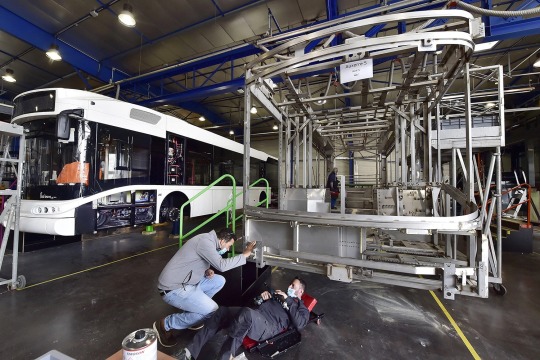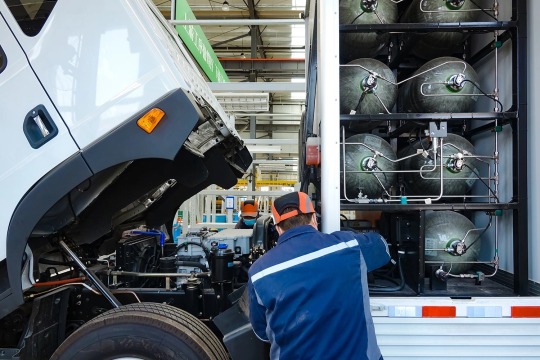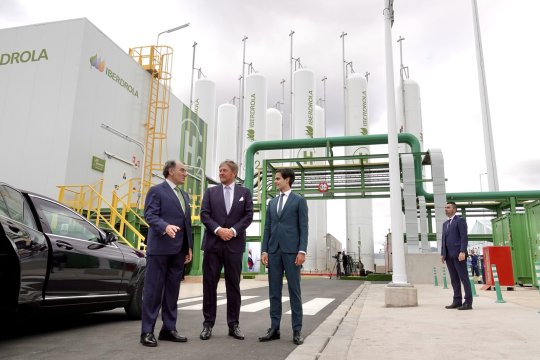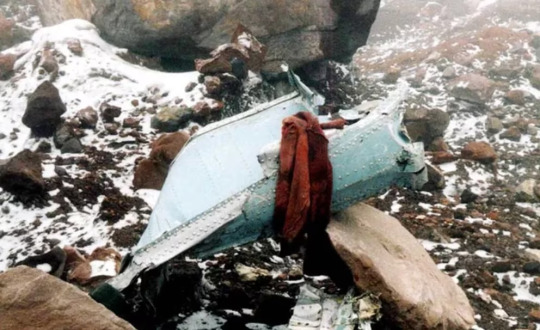#puertollano
Text
Día de Castilla – La Mancha: la provincia de Ciudad Real
Ciudad Real es la quinta y última provincia de Castilla-La Mancha de la que vamos a decir algo en este blog para cumplir dos objetivos: felicitar el día festivo a mis cinco lectores con los que comparto región, y tener una excusa para no dejar morir de inanición el blog.
No es la última por casualidad, he ido de las más cercanas sentimentalmente a las menos vinculadas con mi vida. Entre las…

View On WordPress
#@PLDLuis#Almadén#Almagro#Castilla - La Mancha#Ciudad Real#Daimiel#España#filatelia#La Solana#Lagunas de Ruidera#Motilla de Azuer#philately#Provincia#Puertollano#San Carlos del Valle#sellos#Stamps#Tablas de Daimiel#Villanueva de los Infantes
1 note
·
View note
Text
i just came across the most manchego thing ever on google maps

#cabezarados sounds like a fake town in a town making fun of rural spain#anyways la mancha <3333#the puertollano sign gives the extra touch#i love puertollano simply cause everytime someone mention it in front of my grandma she makes a smug smile and says#'puertollano que no es ni puerto ni llano' and laughs at herself#for non-hispanics: puertollano means 'flatport'#and as my grandma always points out. it isn't a port nor is flat#also cabezarados translates to 'ploughhead'
5 notes
·
View notes
Text
Hydrogen Is the Future—or a Complete Mirage!
The green-hydrogen industry is a case study in the potential—for better and worse—of our new economic era.
— July 14, 2023 | Foreign Policy | By Adam Tooze

An employee of Air Liquide in front of an electrolyzer at the company's future hydrogen production facility of renewable hydrogen in Oberhausen, Germany, on May 2, 2023. Ina Fassbender/ AFP Via Getty Images
With the vast majority of the world’s governments committed to decarbonizing their economies in the next two generations, we are embarked on a voyage into the unknown. What was once an argument over carbon pricing and emissions trading has turned into an industrial policy race. Along the way there will be resistance and denial. There will also be breakthroughs and unexpected wins. The cost of solar and wind power has fallen spectacularly in the last 20 years. Battery-powered electric vehicles (EVs) have moved from fantasy to ubiquitous reality.
But alongside outright opposition and clear wins, we will also have to contend with situations that are murkier, with wishful thinking and motivated reasoning. As we search for technical solutions to the puzzle of decarbonization, we must beware the mirages of the energy transition.
On a desert trek a mirage can be fatal. Walk too far in the wrong direction, and there may be no way back. You succumb to exhaustion before you can find real water. On the other hand, if you don’t head toward what looks like an oasis, you cannot be sure that you will find another one in time.
Right now, we face a similar dilemma, a dilemma of huge proportions not with regard to H2O but one of its components, H2—hydrogen. Is hydrogen a key part of the world’s energy future or a dangerous fata morgana? It is a question on which tens of trillions of dollars in investment may end up hinging. And scale matters.
For decades, economists warned of the dangers of trying through industrial policy to pick winners. The risk is not just that you might fail, but that in doing so you incur costs. You commit real resources that foreclose other options. The lesson was once that we should leave it to the market. But that was a recipe for a less urgent time. The climate crisis gives us no time. We cannot avoid the challenge of choosing our energy future. As Chuck Sabel and David Victor argue in their important new book Fixing the Climate: Strategies for an Uncertain World, it is through local partnership and experimentation that we are most likely to find answers to these technical dilemmas. But, as the case of hydrogen demonstrates, we must beware the efforts of powerful vested interests to use radical technological visions to channel us toward what are in fact conservative and ruinously expensive options.

A green hydrogen plant built by Spanish company Iberdrola in Puertollano, Spain, on April 18, 2023. Valentine Bontemps/AFP Via Getty Images
In the energy future there are certain elements that seem clear. Electricity is going to play a much bigger role than ever before in our energy mix. But some very knotty problems remain. Can electricity suffice? How do you unleash the chemical reactions necessary to produce essential building blocks of modern life like fertilizer and cement without employing hydrocarbons and applying great heat? To smelt the 1.8 billion tons of steel we use every year, you need temperatures of almost 2,000 degrees Celsius. Can we get there without combustion? How do you power aircraft flying thousands of miles, tens of thousands of feet in the air? How do you propel giant container ships around the world? Electric motors and batteries can hardly suffice.
Hydrogen recommends itself as a solution because it burns very hot. And when it does, it releases only water. We know how to make hydrogen by running electric current through water. And we know how to generate electricity cleanly. Green hydrogen thus seems easily within reach. Alternatively, if hydrogen is manufactured using natural gas rather than electrolysis, the industrial facilities can be adapted to allow immediate, at-source CO2 capture. This kind of hydrogen is known as blue hydrogen.
Following this engineering logic, H2 is presented by its advocates as a Swiss army knife of the energy transition, a versatile adjunct to the basic strategy of electrifying everything. The question is whether H2 solutions, though they may be technically viable, make any sense from the point of view of the broader strategy of energy transition, or whether they might in fact be an expensive wrong turn.
Using hydrogen as an energy store is hugely inefficient. With current technology producing hydrogen from water by way of electrolysis consumes vastly more energy than will be stored and ultimately released by burning the hydrogen. Why not use the same electricity to generate the heat or drive a motor directly? The necessary electrolysis equipment is expensive. And though hydrogen may burn cleanly, as a fuel it is inconvenient because of its corrosive properties, its low energy per unit of volume, and its tendency to explode. Storing and moving hydrogen around will require huge investment in shipping facilities, pipelines, filling stations, or facilities to convert hydrogen into the more stable form of ammonia.
The kind of schemes pushed by hydrogen’s lobbyists foresee annual consumption rising by 2050 to more than 600 million tons per annum, compared to 100 million tons today. This would consume a huge share of green electricity production. In a scenario favored by the Hydrogen Council, of the United States’ 2,900 gigawatts of renewable energy production, 650 gigawatts would be consumed by hydrogen electrolysis. That is almost three times the total capacity of renewable power installed today.
The costs will be gigantic. The cost for a hydrogen build-out over coming decades could run into the tens of trillions of dollars. Added to which, to work as a system, the investment in hydrogen production, transport, and consumption will have to be undertaken simultaneously.
Little wonder, perhaps, that though the vision of the “hydrogen economy” as an integrated economic and technical system has been around for half a century, we have precious little actual experience with hydrogen fuel. Indeed, there is an entire cottage industry of hydrogen skeptics. The most vocal of these is Michael Liebreich, whose consultancy has popularized the so-called hydrogen ladder, designed to highlight how unrealistic many of them are. If one follows the Liebreich analysis, the vast majority of proposed hydrogen uses in transport and industrial heating are, in fact, unrealistic due to their sheer inefficiency. In each case there is an obvious alternative, most of them including the direct application of electricity.

Technicians work on the construction of a hydrogen bus at a plant in Albi, France, on March 4, 2021. Georges Gobet/AFP Via Getty Images
Nevertheless, in the last six years a huge coalition of national governments and industrial interests has assembled around the promise of a hydrogen-based economy.
The Hydrogen Council boasts corporate sponsors ranging from Airbus and Aramco to BMW, Daimler Truck, Honda, Toyota and Hyundai, Siemens, Shell, and Microsoft. The national governments of Japan, South Korea, the EU, the U.K., the U.S., and China all have hydrogen strategies. There are new project announcements regularly. Experimental shipments of ammonia have docked in Japan. The EU is planning an elaborate network of pipelines, known as the hydrogen backbone. All told, the Hydrogen Council counts $320 billion in hydrogen projects announced around the world.
Given the fact that many new uses of hydrogen are untested, and given the skepticism among many influential energy economists and engineers, it is reasonable to ask what motivates this wave of commitments to the hydrogen vision.
In technological terms, hydrogen may represent a shimmering image of possibility on a distant horizon, but in political economy terms, it has a more immediate role. It is a route through which existing fossil fuel interests can imagine a place for themselves in the new energy future. The presence of oil majors and energy companies in the ranks of the Hydrogen Council is not coincidental. Hydrogen enables natural gas suppliers to imagine that they can transition their facilities to green fuels. Makers of combustion engines and gas turbines can conceive of burning hydrogen instead. Storing hydrogen or ammonia like gas or oil promises a solution to the issues of intermittency in renewable power generation and may extend the life of gas turbine power stations. For governments around the world, a more familiar technology than one largely based on solar panels, windmills, and batteries is a way of calming nerves about the transformation they have notionally signed up for.
Looking at several key geographies in which hydrogen projects are currently being discussed offers a compound psychological portrait of the common moment of global uncertainty.

A worker at the Fukushima Hydrogen Energy Research Field, a test facility that produces hydrogen from renewable energy, in Fukushima, Japan, on Feb. 15, 2023. Richard A. Brooks/AFP Via Getty Images
The first country to formulate a national hydrogen strategy was Japan. Japan has long pioneered exotic energy solutions. Since undersea pipelines to Japan are impractical, it was Japanese demand that gave life to the seaborne market for liquefied natural gas (LNG). What motivated the hydrogen turn in 2017 was a combination of post-Fukushima shock, perennial anxiety about energy security, and a long-standing commitment to hydrogen by key Japanese car manufacturers. Though Toyota, the world’s no. 1 car producer, pioneered the hybrid in the form of the ubiquitous Prius, it has been slow to commit to full electric. The same is true for the other East Asian car producers—Honda, Nissan, and South Korea’s Hyundai. In the face of fierce competition from cheap Chinese electric vehicles, they embrace a government commitment to hydrogen, which in the view of many experts concentrates on precisely the wrong areas i.e. transport and electricity generation, rather than industrial applications.
The prospect of a substantial East Asian import demand for hydrogen encourages the economists at the Hydrogen Council to imagine a global trade in hydrogen that essentially mirrors the existing oil and gas markets. These have historically centered on flows of hydrocarbons from key producing regions such as North Africa, the Middle East, and North America to importers in Europe and Asia. Fracked natural gas converted into LNG is following this same route. And it seems possible that hydrogen and ammonia derived from hydrogen may do the same.
CF Industries, the United States’ largest producer of ammonia, has finalized a deal to ship blue ammonia to Japan’s largest power utility for use alongside oil and gas in power generation. The CO2 storage that makes the ammonia blue rather than gray has been contracted between CF Industries and U.S. oil giant Exxon. A highly defensive strategy in Japan thus serves to provide a market for a conservative vision of the energy transition in the United Sates as well. Meanwhile, Saudi Aramco, by far the world’s largest oil company, is touting shipments of blue ammonia, which it hopes to deliver to Japan or East Asia. Though the cost in terms of energy content is the equivalent of around $250 per barrel of oil, Aramco hopes to ship 11 million tons of blue ammonia to world markets by 2030.
To get through the current gas crisis, EU nations have concluded LNG deals with both the Gulf states and the United States. Beyond LNG, it is also fully committed to the hydrogen bandwagon. And again, this follows a defensive logic. The aim is to use green or blue hydrogen or ammonia to find a new niche for European heavy industry, which is otherwise at risk of being entirely knocked out of world markets by high energy prices and Europe’s carbon levy.
The European steel industry today accounts for less than ten percent of global production. It is a leader in green innovation. And the world will need technological first-movers to shake up the fossil-fuel dependent incumbents, notably in China. But whether this justifies Europe’s enormous commitment to hydrogen is another question. It seems motivated more by the desire to hold up the process of deindustrialization and worries about working-class voters drifting into the arms of populists, than by a forward looking strategic calculus.
In the Netherlands, regions that have hitherto served as hubs for global natural gas trading are now competing for designation as Europe’s “hydrogen valley.” In June, German Chancellor Olaf Scholz and Italian Prime Minister Giorgia Meloni inked the contract on the SoutH2 Corridor, a pipeline that will carry H2 up the Italian peninsula to Austria and southern Germany. Meanwhile, France has pushed Spain into agreeing to a subsea hydrogen connection rather than a natural gas pipeline over the Pyrenees. Spain and Portugal have ample LNG terminal capacity. But Spain’s solar and wind potential also make it Europe’s natural site for green hydrogen production and a “green hydrogen” pipe, regardless of its eventual uses, in the words of one commentator looks “less pharaonic and fossil-filled” than the original natural gas proposal.

A hydrogen-powered train is refilled by a mobile hydrogen filling station at the Siemens test site in Wegberg, Germany, on Sept. 9, 2022. Bernd/AFP Via Getty Images
How much hydrogen will actually be produced in Europe remains an open question. Proximity to the point of consumption and the low capital costs of investment in Europe speak in favor of local production. But one of the reasons that hydrogen projects appeal to European strategists is that they offer a new vision of European-African cooperation. Given demographic trends and migration pressure, Europe desperately needs to believe that it has a promising African strategy. Africa’s potential for renewable electricity generation is spectacular. Germany has recently entered into a hydrogen partnership with Namibia. But this raises new questions.
First and foremost, where will a largely desert country source the water for electrolysis? Secondly, will Namibia export only hydrogen, ammonia, or some of the industrial products made with the green inputs? It would be advantageous for Namibia to develop a heavy-chemicals and iron-smelting industry. But from Germany’s point of view, that might well defeat the object, which is precisely to provide affordable green energy with which to keep industrial jobs in Europe.
A variety of conservative motives thus converge in the hydrogen coalition. Most explicit of all is the case of post-Brexit Britain. Once a leader in the exit from coal, enabled by a “dash for gas” and offshore wind, the U.K. has recently hit an impasse. Hard-to-abate sectors like household heating, which in the U.K. is heavily dependent on natural gas, require massive investments in electrification, notably in heat pumps. These are expensive. In the United Kingdom, the beleaguered Tory government, which has presided over a decade of stagnating real incomes, is considering as an alternative the widespread introduction of hydrogen for domestic heating. Among energy experts this idea is widely regarded as an impractical boondoggle for the gas industry that defers the eventual and inevitable electrification at the expense of prolonged household emissions. But from the point of view of politics, it has the attraction that it costs relatively less per household to replace natural gas with hydrogen.

Employees work on the assembly line of fuel cell electric vehicles powered by hydrogen at a factory in Qingdao, Shandong province, China, on March 29, 2022. VCG Via Getty Images
As this brief tour suggests, there is every reason to fear that tens of billions of dollars in subsidies, vast amounts of political capital, and precious time are being invested in “green” energy investments, the main attraction of which is that they minimize change and perpetuate as far as possible the existing patterns of the hydrocarbon energy system. This is not greenwashing in the simple sense of rebadging or mislabeling. If carried through, it is far more substantial than that. It will build ships and put pipes in the ground. It will consume huge amounts of desperately scarce green electricity. And this faces us with a dilemma.
In confronting the challenge of the energy transition, we need a bias for action. We need to experiment. There is every reason to trust in learning-curve effects. Electrolyzers, for instance, will get more affordable, reducing the costs of hydrogen production. At certain times and in certain places, green power may well become so abundant that pouring it into electrolysis makes sense. And even if many hydrogen projects do not succeed, that may be a risk worth taking. We will likely learn new techniques in the process. In facing the uncertainties of the energy transition, we need to cultivate a tolerance for failure. Furthermore, even if hydrogen is a prime example of corporate log-rolling, we should presumably welcome the broadening of the green coalition to include powerful fossil fuel interests.
The real and inescapable tradeoff arises when we commit scarce resources—both real and political—to the hydrogen dream. The limits of public tolerance for the costs of the energy transition are already abundantly apparent, in Asia and Europe as well as in the United States. Pumping money into subsidies that generate huge economies of scale and cost reductions is one thing. Wasting money on lame-duck projects with little prospect of success is quite another. What is at stake is ultimately the legitimacy of the energy transition as such.
In the end, there is no patented method distinguishing self-serving hype from real opportunity. There is no alternative but to subject competing claims to intense public, scientific, and technical scrutiny. And if the ship has already sailed and subsidies are already on the table, then retrospective cost-benefit assessment is called for.
Ideally, the approach should be piecemeal and stepwise, and in this regard the crucial thing to note about hydrogen is that to regard it as a futuristic fantasy is itself misguided. We already live in a hydrogen-based world. Two key sectors of modern industry could not operate without it. Oil refining relies on hydrogen, as does the production of fertilizer by the Haber-Bosch process on which we depend for roughly half of our food production. These two sectors generate the bulk of the demand for the masses of hydrogen we currently consume.
We may not need 600 million, 500 million, or even 300 million tons of green and blue hydrogen by 2050. But we currently use about 100 million, and of that total, barely 1 million is clean. It is around that core that hydrogen experimentation should be concentrated, in places where an infrastructure already exists. This is challenging because transporting hydrogen is expensive, and many of the current points of use of hydrogen, notably in Europe, are not awash in cheap green power. But there are two places where the conditions for experimentation within the existing hydrogen economy seem most propitious.
One is China, and specifically northern China and Inner Mongolia, where China currently concentrates a large part of its immense production of fertilizer, cement, and much of its steel industry. China is leading the world in the installation of solar and wind power and is pioneering ultra-high-voltage transmission. Unlike Japan and South Korea, China has shown no particular enthusiasm for hydrogen. It is placing the biggest bet in the world on the more direct route to electrification by way of renewable generation and batteries. But China is already the largest and lowest-cost producer of electrolysis equipment. In 2022, China launched a modestly proportioned hydrogen strategy. In cooperation with the United Nations it has initiated an experiment with green fertilizer production, and who would bet against its chances of establishing a large-scale hydrogen energy system?
The other key player is the United States. After years of delay, the U.S. lags far behind in photovoltaics batteries, and offshore wind. But in hydrogen, and specifically in the adjoining states of Texas and Louisiana on the Gulf of Mexico, it has obvious advantages over any other location in the West. The United States is home to a giant petrochemicals complex. It is the only Western economy that can compete with India and China in fertilizer production. In Texas, there are actually more than 2500 kilometers of hardened hydrogen pipelines. And insofar as players like Exxon have a green energy strategy, it is carbon sequestration, which will be the technology needed for blue hydrogen production.
It is not by accident that America’s signature climate legislation, the Inflation Reduction Act, targeted its most generous subsidies—the most generous ever offered for green energy in the United States—on hydrogen production. The hydrogen lobby is hard at work, and it has turned Texas into the lowest-cost site for H2 production in the Western world. It is not a model one would want to see emulated anywhere else, but it may serve as a technology incubator that charts what is viable and what is not.
There is very good reason to suspect the motives of every player in the energy transition. Distinguishing true innovation from self-serving conservatism is going to be a key challenge in the new era in which we have to pick winners. We need to develop a culture of vigilance. But there are also good reasons to expect certain key features of the new to grow out of the old. Innovation is miraculous but it rarely falls like mana from heaven. As Sabel and Victor argue in their book, it grows from within expert technical communities with powerful vested interests in change. The petrochemical complex of the Gulf of Mexico may seem an unlikely venue for the birth of a green new future, but it is only logical that the test of whether the hydrogen economy is a real possibility will be run at the heart of the existing hydrocarbon economy.
— Adam Tooze is a Columnist at Foreign Policy and a History Professor and the Director of the European Institute at Columbia University. He is the Author of Chartbook, a newsletter on Rconomics, Geopolitics, and History.
#Hydrogen#Battery-Powered Electric Vehicles (EVs)#Chuck Sabel | David Victor#Iberdrola Puertollano Spain 🇪🇸#Green Hydrogen#Hydrogen Council of the United States 🇺🇸#Hydrogen Economy#Airbus | Aramco | BMW | Daimler Truck | Honda | Toyota | Hyundai | Siemens | Shell | Microsoft#Japan 🇯🇵 | South Korea 🇰🇷 | EU 🇪🇺 | UK 🇬🇧 | US 🇺🇸 | China 🇨🇳#Portugal 🇵🇹 | Germany 🇩🇪 | Namibia 🇳🇦#European-African Cooperation
1 note
·
View note
Text

Oriol Maspons. Untitled (Puertollano, La Mancha. Photography for the book "Tierra de Olivos", by Antonio Ferres), 1961.
57 notes
·
View notes
Text
Cristina García Rodero
youtube
Cristina García Rodero was born in 1949 in Puertollano, Spain. Rodero is a photographer who first rose to prominence with her 1989 book España Oculta, the product of over ten years documenting traditional celebrations in her native Spain and elsewhere in the Mediterranean region. The book won the Book of the Year Award at the Arles Festival of Photography. Rodero has received numerous other honors, including the W Eugene Smith Award and Spain's Premio Nacional de Fotografía, and her work has been exhibited throughout the world.
7 notes
·
View notes
Text

"Minas y mineros, palos, hambre y represión en un lugar de la Mancha... Puertollano y comarca".
Eran tiempos de ropa azul y mano alzada. De vez en cuando nos cruzábamos por las calles con gentes de vientre inflamado y cara famélica y con profundas ojeras."Mira niño, me decían, ese que va por ahí se va a morir esta noche". Y yo nunca entendía el por qué de tan macabra afirmación. Luego, mucho más tarde, sí que lo entendí.
En aquel Puertollano de mi infancia se daban todas las prerrogativas para que sucedieran esas escenas. La hambruna de los años cuarenta causaba estragos en general y aquí, en el pueblo, en particular. Lugar de paso, de aluvión, al socaire del trabajo en las minas, la ciudad, estratégicamente situada a caballo entre Andalucía, Extremadura y la enorme extensión al sur de la llanura Manchega, había congregado durante la última etapa de la Guerra Civil a un buen número de refugiados que, terminada la contienda, intentaban sobrevivir en su lugar de acogida.
Gentes humildes, desarraigadas, en búsqueda desesperada de asiento que les permitiera acceder a trabajo y pan estables, formaban ese importante contingente de población flotante a los que la miseria les maquillaba trágicamente su aspecto.
Con ellos los demás. La clase obrera, mayoritaria, y la escasa burguesía que componían altos directivos de la Industria, Comerciantes, Vendedores de Mercado, Empleados de Renfe y Hacendados de la escasa actividad agrícola y ganadera de la comarca.
La ropa azul predominaba en el atuendo mayoritario de las gentes por la sencilla razón de ser la más asequible en aquellos duros años. Se empleaba para lo que se llamaba "vestir" y luego, cuando se desgastaba, para usarla en el trabajo diario. Aún me parece estar viendo a los mineros recién aseados, sentados a las puertas de sus casas cuarteleras, sobre tarugos de entibación, con los pantalones zurcidos por varias partes, las camisetas de tela azul, calzando sus alpargatas "rocaví" - aquellas que se anunciaron después en Radio Parroquial como propias para vagonear- degustando un botellín de gaseosa de Florián mezclada con vino peleón de la tierra… y próximos sus proles, niños semi-desnudos manchados de tierra y barro por todo el cuerpo, jugando a las canicas por el suelo y acercándose a ellos de vez en cuando por si podían recibir alguno de los garbanzos tostados que servían de aperitivo a sus padres. Dentro de la vivienda el cuarto que servía de todo: comedor, cocina y estar en una sola pieza y, tras él, el único dormitorio oscuro y promiscuo que albergaba descansos a toda la familia.
Y la Esposa...la "parienta" como gustaban de llamarla ante los demás. Preparando el pote, remendando andrajos o amontonándolos en la cesta de mimbre para dirigirse con ella al arroyo de "la bachillera" a la colada habitual...
¡Mujeres de aquél tiempo!...Sufridas esposas, madres y amas de casa. Muchas de ellas con el dolor de la pérdida en la Mina de padres, esposos, hijos o hermanos.... Amantes y sensibles en la oscura intimidad de sus encuentros con su hombre y eficaces administradoras del escaso salario que entraba en sus casas. Trabajadoras infatigables para dotar a su humilde hogar y a su familia de un casi imposible signo de presentabilidad... Madres abnegadas que asumían su analfabetismo como algo natural para ellas pero indeseable para sus hijos.... ¡Que buenas mujeres las esposas de aquellos mineros!
La distracción más barata y abundante eran las procesiones eclesiásticas de aquel entonces. No sabía las razones pero se celebraban muchas. Lo que no entendía muy bien era el por qué de los Himnos que sonaban a la entrada y salida de las iglesias y toda la muchedumbre alzando el brazo y con caras de susto. Pero aquello, como se repetía tanto en el cine, en los toros o al inaugurar la Feria, terminó por ser costumbre y dejar de asombrarme.
¡Que Puertollano aquél, bucólico y minero, de atardeceres dorados y neblinas de carbón quemado!.. Desde lo alto del peñón gordo del cerro de Santa Ana contemplábamos absortos el paisaje que se nos ofrecía con aquel desparrame de casas trepadoras, chimeneas humeantes, la gallarda silueta de la Asunción y el cuerpo yacente con su penacho de humo negro del ciclópeo Terry con sus vagonetas rampantes en aquel ir y venir continuo por sus jorobas....
Pero a mi desbordada imaginación infantil lo que mas impresionaba era contemplar el pueblo desde la cuesta del puerto de Mestanza. Desde allí observaba en aquellos inolvidables atardeceres, los trenes mineros que surcaban el valle en todas direcciones con su profusión de luces, chirridos y vapores... las luces multicolores de cambios de vías... las procesiones que, como luciérnagas, formaban los mineros en bicicleta camino de sus Pozos… y aquella confusión de luces parpadeantes que ofrecían las Torres y Edificios de la Destilería de Pizarra de la SMMP... y todo ello en primera línea de una panorámica con la silueta del pueblo al fondo, festoneado con las calles trepadoras por los cerros de San Sebastián y Santa Ana que, a mis ojos, se presentaban abrazando amorosos -como para protegerlo de cualquier enemigo- a mi amado Puertollano de aquél ayer tan lejano pero tan próximo en el recuerdo que siempre llevaré con orgullo en mi corazón.
Fuente: (Eloy Núñez Sánchez, 24-12-2016)
3 notes
·
View notes
Text




IMAGENES Y DATOS INTERESANTES DEL DIA 15 DE AGOSTO DE 2023
Día Mundial de la Relajación, Día Mundial del Reiki, Año Internacional del Mijo y Año Internacional del Diálogo como Garantía de Paz.
Santa Alba, Virgen de las Angustias, San Tarsicio, Virgen de Aránzazu, Virgen de la Asunción, Nuestra Señora de la Aurora, Nuestra Señora de la Azucena, Nuestra Señora de la Paloma y San Armelio Abad.
Tal día como hoy en el año 1923: Se instala en Weimar (Alemania) la Escuela Bauhaus, de arte y arquitectura que generó una corriente artística propia de suma importancia en el siglo XX.
En 1969: Da comienzo el festival de Woodstock en Bethel (Estados Unidos), una congregación hippie con conciertos de música rock que superó los 400.000 asistentes y marcó un hito en la cultura del siglo XX.
En 1971: El presidente Richard Nixon de Estados Unidos pone fin al el patrón oro al anunciar la suspensión de la convertibilidad en metal del dólar estadounidense.
En 1976: Desaparece el Vuelo 011 de SAETA cuando sobrevolaba una región entre Quito y Cuenca (Ecuador). Los restos del avión fueron encontrados 26 años después (en el 2002) en el volcán Chimborazo, murieron las 59 personas que iban a bordo.
En 1977: En el radiotelescopio Big Ear (Radio Observatorio de la Universidad del Estado de Ohio) se recibe una señal de radio que por sus características podría ser de una civilización extraterrestre. Ha pasado a la historia como la 'Señal WOW' por la anotación que se hizo en el papel de impresora en el que fue registrado.
En 1998: La banda terrorista IRA Auténtico hace explotar un coche bomba en el pueblo de Omagh (Irlanda del Norte), matando a 26 personas.
En 2003: El gobierno de Libia reconoce oficialmente su responsabilidad, pero no su culpa, en el atentado que causó que un avión de la Pan Am se estrellara en 1988 en Lockerbie (Escocia). En el que murieron 270 personas.
En 2003: Se produce un incendio en la refinería de la compañía Repsol en Puertollano (España) en el que mueren tres trabajadores.
3 notes
·
View notes
Text



The green hydrogen plant Iberdrola in Puertollano, Spain prevents the emission of 48,000 tons of CO2 annually. The green hydrogen is used for the adjacent ammonia plant. King Willem-Alexander is given a tour and an explanation of the production process. June 13, 2023.
📷 Royal House of the Netherlands
4 notes
·
View notes
Text
Tal día como hoy 15 de agosto ...
2013: El Instituto Smithsoniano (Estados Unidos) anuncia que se ha descubierto una nueva especie de mamífero en América, al que han llamado 'olinguito' (Bassaricyon neblina). Pertenece a la familia de mapaches y coatíes, y es endémico de Colombia y Ecuador.

2003: Se produce un incendio en la refinería de la compañía Repsol en Puertollano (España) en el que mueren tres trabajadores.
2003: El gobierno de Libia reconoce oficialmente su responsabilidad, pero no su culpa, en el atentado que causó que un avión de la Pan Am se estrellara en 1988 en Lockerbie (Escocia). En el que murieron 270 personas.
1998: La banda terrorista IRA Auténtico hace explotar un coche bomba en el pueblo de Omagh (Irlanda del Norte), matando a 26 personas.
1977: En el radiotelescopio Big Ear (Radio Observatorio de la Universidad del Estado de Ohio) se recibe una señal de radio que por sus características podría ser de una civilización extraterrestre. Ha pasado a la historia como la 'Señal WOW' por la anotación que se hizo en el papel de impresora en el que fue registrado.
1976: Desaparece el Vuelo 011 de SAETA cuando sobrevolaba una región entre Quito y Cuenca (Ecuador). Los restos del avión fueron encontrados 26 años después (en el 2002) en el volcán Chimborazo, murieron las 59 personas que iban a bordo.

1971: El presidente Richard Nixon de Estados Unidos pone fin al el patrón oro al anunciar la suspensión de la convertibilidad en metal del dólar estadounidense.
1969: Da comienzo el festival de Woodstock en Bethel (Estados Unidos), una congregación hippie con conciertos de música rock que superó los 400.000 asistentes y marcó un hito en la cultura del siglo XX.
1962: Sale al público la revista Amazing Fantasy n.º 15 en Estados Unidos, en la que por primera vez aparece el personaje de Spider-Man, creado por Stan Lee y Steve Ditko.

1923: Se instala en Weimar (Alemania) la Escuela Bauhaus, de arte y arquitectura que generó una corriente artística propia de suma importancia en el siglo XX.
2 notes
·
View notes
Text
Cristina García Rodero was born in Puertollano, Spain. She studied painting at the School of Fine Arts at the University of Madrid, before taking up photography. She then qualified as a teacher and worked full-time in education. For the next 16 years, she also dedicated her time to researching and photographing popular and traditional festivities – religious and pagan – principally in Spain but also across Mediterranean Europe.










#cristina garcia rodero#photography#culture#art collective#photomagazine#art#london#bnwphotography#uk photography#female photographers#photojournalism
16 notes
·
View notes
Text
Puertollano is soooo funny because it doesn't either have a puerto nor is llano
2 notes
·
View notes
Text
La brecha del alquiler se agranda en España: un piso en renta en los barrios más caros cuesta 2.000 euros más que en los más baratos - Infobae
Alquilar una vivienda de 100 metros cuadrados en el barrio madrileño de Almagro cuesta 2.422 euros al mes de media, mientras en uno de Puertollano ronda los 500 euros
— Leer en www.infobae.com/espana/2024/03/12/la-brecha-del-alquiler-se-agranda-en-espana-un-piso-en-renta-en-los-barrios-mas-caros-cuesta-2000-euros-mas-que-en-los-mas-baratos/
View On WordPress
0 notes
Text
A PROVINCE IN PHOTOS - CIUDAD REAL










sources: 1, 2, 3, 4, 5, 6, 7, 8, 9, 10
pic 1 is from campo de criptana. pic 2 is from manzanares. pic 3 depicts the holy week in daimiel. pic 4 was taken in argamasilla de alba. pic 5 is from almagro. pics 6 and 7 were taken in viso del marqués. pic 6 is of a botijo, a traditional water container made of clay associated with rural spain. pic 8 is from puertollano. finally, pics 9 are 10 were taken in daimiel.
#typicalspanish#provinceinphotos#ciudad real#photography#spain#making this post reminded me of this one guy my uncle told us about#he was from ciudad real and not only he refused to acknowledge albacete as part of la mancha#he said tomelloso was the economic capital of la mancha and almagro it's cultural one#which ?????#almagro is really pretty tho i have to give that to him
10 notes
·
View notes
Text
Ana Mena abrirá la Feria de Puertollano con un concierto el 27 de abril
Ana Mena abrirá la Feria de Mayo de Puertollano (Ciudad Real) con el concierto que ofrecerá el 27 de abril a las 23.00 horas en la Plaza de Toros, según ha informado este viernes el Ayuntamiento en su página web.
En este mismo medio, el concejal de Festejos, Juan Sebastián López Berdonces, ha apuntado al “talento y juventud” de esta artista de Estepona que “derrocha arte”.
López Berdonces añade…

View On WordPress
0 notes
Text

VKM Reformas Ciudad Real
VKM Reformas está formado por un cluster de Estudios de Arquitectura, Interiorismo y Empresas de Reformas con equipos de Arquitectos, Interioristas y Reformistas profesionales en Rehabilitación y Reformas de Viviendas para Particulares en Ciudad Real
Visita nuestra web:
https://www.vkmreformasciudadreal.es
Ofrecemos servicios en:
Abenójar, Agudo Alamillo, Albaladejo, Alcázar de San Juan, Alcoba de los Montes, Alcolea Calatrava, Alcubillas, Aldea de Rey, Alhambra, Almadén, Almadenejos, Almagro, Almedina, Almodóvar del Campo, Almuradiel, Anchuras, Arenales de San Gregorio, Arenas de San Juan, Argamasilla de Alba, Argamasilla de Calatrava, Arroba de los Montes, Ballesteros de Calatrava, Bolaños de Calatrava, Brazatortas, Cabezarados, Cabezarrubias de Puerto, Calzada de Calatrava, Campo de Criptana, Cañada de Calatrava, Caracuel Calatrava, Carrión de Calatrava, Carrizosa, Castellar de Santiago, Chillón, Ciudad Real, Corral de Calatrava, Cózar, Daimiel, El Robledo, Fernán Caballero, Fontanarejo, Fuencaliente, Fuenllana, Fuente el Fresno, Granátula de Calatrava, Guadalmez, Herencia, Hinojosas de Calatrava, Horcajo de los Montes, La Solana, Las Labores, Llanos del Caudillo, Los Cortijos, Los Pozuelos de Calatrava, Luciana, Malagón, Manzanares, Membrilla, Mestanza, Miguelturra, Montiel, Moral de Calatrava, Navalpino, Navas de Estena, Pedro Muñoz, Picón, Piedrabuena, Poblete, Porzuna, Pozuelo de Calatrava, Puebla de Don Rodrigo, Puebla del Príncipe, Puerto Lápice, Puertollano, Retuerta del Bullaque, Ruidera, Saceruela, San Carlos del Valle, San Lorenzo de Calatrava, Santa Cruz de los Cáñamos, Santa Cruz de Mudela, Socuéllamos, Solana del Pino, Terrinches, Tomelloso, Torralba de Calatrava, Torre de Juan Abad, Torrenueva, Valdemanco de Esteras, Valdepeñas, Valenzuela de Calatrava, Villahermosa, Villamanrique, Villamayor de Calatrava, Villanueva de la Fuente, Villanueva de los Infantes, Villanueva de San Carlos, Villar del Pozo, Villarrubia de los Ojos, Villarta de San Juan, Viso del Marqués.
0 notes
